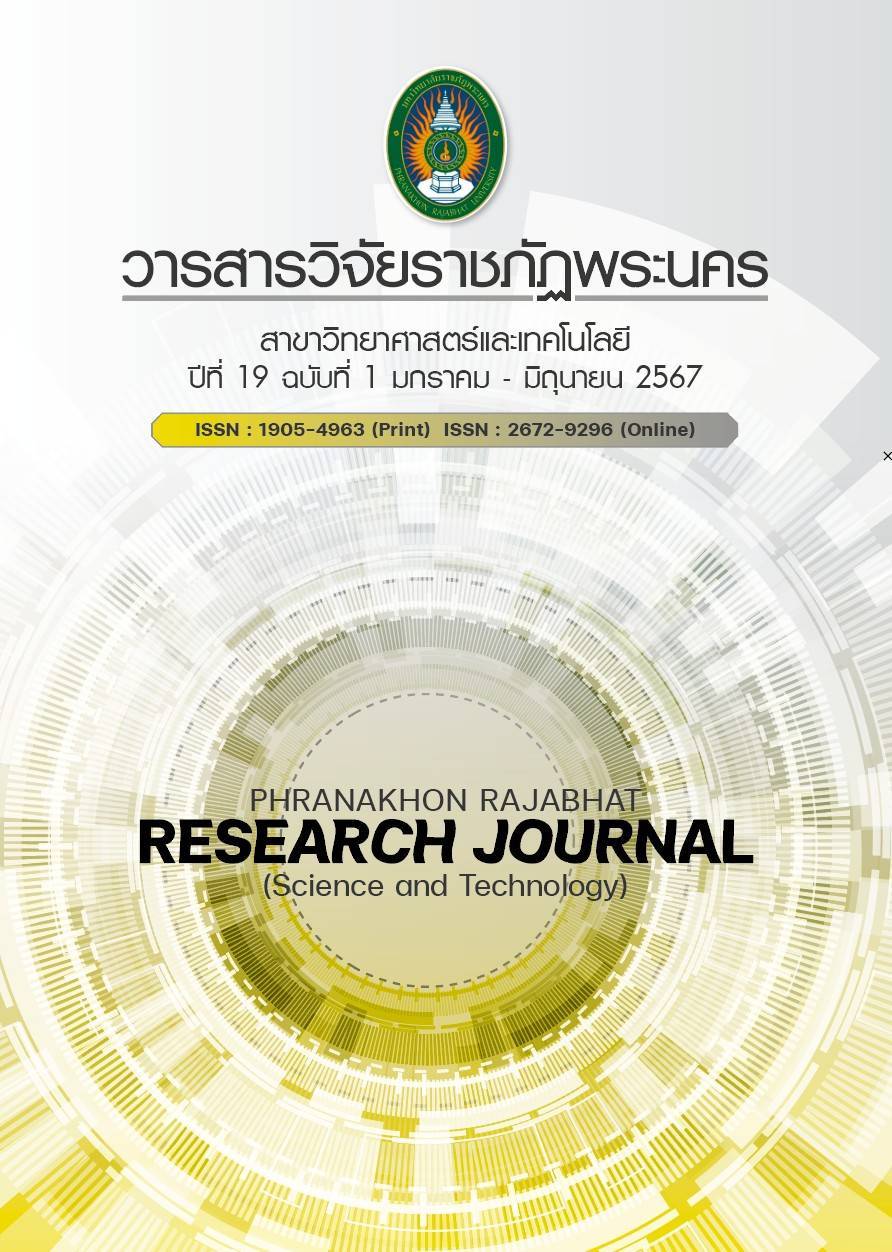THE CONTENT OF TOTAL ASH, ACID-INSOLUBLE ASH AND PESTICIDE RESIDUE DETECTION CONTAINED OF ZINGIBERACEAE CRUDE DRUGS IN BANGKOK
Keywords:
Total ash, Acid-insoluble ash, Pesticide residue, Herb, ZingiberaceaeAbstract
In this study, the total ash content, acid-insoluble ash content, and pesticide residues were
examined in 10 species of the Zingiberaceae family, namely Zingiber zerumbet (L.) Roscoe ex Sm.,
Kaempferia parviflora Wall. ex Baker., Boesenbergia rotunda (L.) Mansf., Curcuma longa L., Curcuma zedoaria (Christm.) Roscoe., Alpinia galanga (L.) Willd., Zingiber officinale Roscoe., Kaempferia galanga L., Zingiber montanum (J.Koenig) Link ex A.Dietr. and Curcuma comosa Roxb. All crude drugs were purchased from three herbal drugstores in Bangkok. The total ash and acid- insoluble ash contents were determined according to the Thai Herbal Pharmacopoeia. The detection of pesticide residue contamination using the GPO-TM Kit, that for detection of all four pesticide groups. The results showed that the total ash and acid-insoluble ash contents of Z. zerumbet, K. galangal, Z. montanum and C. comosa were under the official standard value that has passed the Thai Herbal Pharmacopeia standard criteria. Pesticide residues from organophosphate and carbamate pesticides were detected in all 10 dried species of the Zingiberaceae family. Nonetheless, pyrethroid and organochlorine pesticides had not been detected. Pesticide residue detection with test kits serves as a preliminary screening. Therefore, the rhizomes should be thoroughly cleansed according to the five principles of Thai traditional pharmaceutical ethics in order to reduce the amount of pesticide residues before being used to prepare drugs that may affect human health.
References
Angsungnuen, S. (2015). Environmental impact from pesticide utilization. EAU Heritage Journal Science and Technology, 9(1), 50-63. (In Thai)
Boonma, N., Puangmala, S., & Vipunngeun, N. (2020). Macroscopic and microscopic character study of After Midwifery formula of Drug Herbal Medicine 2018. The 7th National Conference Nakhonratchasima College (pp. 1116-1126). Nakhonratchasima: Nakhonratchasima College. (In Thai)
Charoenchai, L., Madaka, F., Pathompak, P., & Saingam, W. (2015). The study of total ash, acid- insoluble ash and cyanide contaminants in plants nearby gold mine. RSU National Research Conference 2015 (pp. 9-17). Pathum Thani: Rangsit University. (In Thai)
Chitra, M., & Thoppil, J. E. (2008). A pharmacognostical report on the rhizome of Alpinia galanga Linn. (Willd). Ancient Science of Life, 27(4), 9-21.
Chokevivat, V. (2004). Quality of crude drug. Journal of Thai Traditional and Alternative Medicine, 2(2), 84-91. (In Thai)
Department of Medical Sciences, Ministry of Public Health. (2016). Novelty in Thailand for Innovation of Insecticide and Herbicide Test Kits. Nonthaburi: Department of Medical Sciences, Ministry of Public Health. (In Thai)
Department of Medical Sciences, Ministry of Public Health. (2017). Thai Herbal Pharmacopoeia 2017. Bangkok: The Agricultural Co-operative Federation of Thailand., Ltd.
Hamjinda, N. S., & Prasittipan, N. (2023). Pesticide residues in herbs case study: Bandongbang herbal growers group, Tambon Dongkeerek, Mueang Prachin Buri District, Prachin Buri Province. RMUTSB Academic Journal, 11(1), 79-91. (In Thai)
Kim, D., Kim, B., Yun, E., Kim, J., Chae, Y., & Park, S. (2013). Statistical quality control of total ash, acid-insoluble ash, loss on drying, and hazardous heavy metals contained in the component medicinal herbs of “Ssanghwatang”, a widely used oriental formula in Korea. Journal of Natural Medicines, 67(1), 27-35.
Leung, K. S. Y., Chan, K., Lau, A. C. K., & Lu, G-H. (2005). Measurement uncertainty for total ash and acid-insoluble ash determination of Chinese materia medica. Accreditation and Quality Assurance, 10(6), 289-294.
Mukherjee, P. K. (2007). Quality control of herbal drugs. New Delhi, India: Galaxy Printers.
Sirirug, P. (2008). The study of Zingiberaceae family in Thailand. Naresuan University Science Journal, 5(2), 119 - 128. (In Thai)
Srithupthai, K. (2018). Detection of pesticide residues in herbal: A case study of farmers group in Ton Phueng sub-district, Phang Khon district, Sakon Nakhon province. Khon Kaen Agriculture Journal, 46(Suppl. 1), 841-846. (In Thai)
Srivastava, S., Mehrotra, S., & Rawat, A. K. S. (2011). Pharmacognostic evaluation of the rhizomes of Curcuma zedoaria Rosc. Pharmacognosy Journal, 3(21), 18-24.
The Government Pharmaceutical Organization (GPO) Thailand. (2017). GPO-TM kits: Application sheet. Government Pharmaceutical Organization of Thailand.
World Health Organization. (2011). Quality control methods for herbal materials. Geneva, Switzerland: World Health Organization.
Downloads
Published
Issue
Section
License

This work is licensed under a Creative Commons Attribution-NonCommercial-NoDerivatives 4.0 International License.
โปรดกรอกเอกสารและลงนาม "หนังสือรับรองให้ตีพิมพ์บทความในวารสารวิจัยมหาวิทยาลัยราชภัฏพระนคร สาขาวิทยาศาสตร์และเทคโนโลยี" ก่อนการตีพิมพ์




